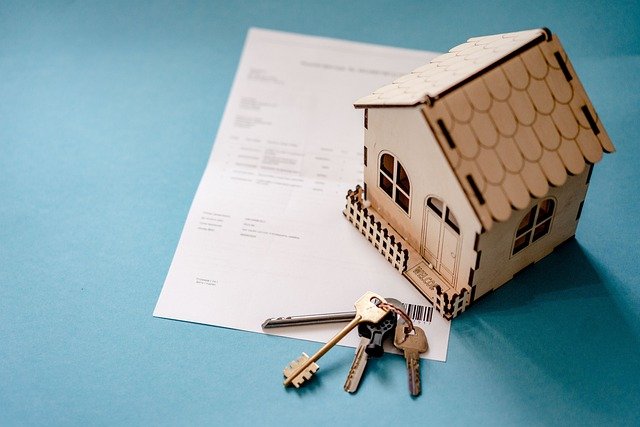Rent To Own Homes
In today's challenging real estate market, many aspiring homeowners are exploring alternative paths to property ownership. One such option gaining popularity is rent-to-own homes. This innovative approach offers a unique blend of renting and buying, providing a stepping stone for those who may not qualify for traditional mortgages. Let's delve into the world of rent-to-own homes and uncover how this arrangement might be the key to unlocking your homeownership dreams.

What exactly are rent-to-own homes?
Rent-to-own homes, also known as lease-option agreements, are properties that allow tenants to rent a home with the option to purchase it at a later date. This arrangement typically involves a standard lease agreement coupled with an option to buy the property within a specified timeframe, usually ranging from one to five years. During this period, a portion of the monthly rent payments may be credited towards the eventual purchase price, helping tenants build equity while they rent.
How do rent-to-own agreements work?
Understanding rent-to-own agreements is crucial for anyone considering this path to homeownership. These contracts usually consist of two parts: a lease agreement and an option to purchase. The lease agreement outlines the terms of renting the property, including monthly payments and duration. The option to purchase gives the tenant the exclusive right to buy the home at a predetermined price within the agreed-upon timeframe. It’s important to note that while the tenant has the option to buy, they are not obligated to do so.
What are the benefits of rent-to-own homes?
Rent-to-own homes offer several advantages for both potential buyers and sellers. For buyers, this arrangement provides an opportunity to:
-
Build credit and save for a down payment while renting
-
Lock in a purchase price, potentially benefiting from future property value increases
-
Test out the home and neighborhood before committing to a purchase
-
Move towards homeownership despite current financial limitations
Sellers may benefit from a larger pool of potential buyers, steady rental income, and the possibility of selling at a predetermined price in a fluctuating market.
What should you consider before entering a rent-to-own contract?
Before diving into a rent-to-own agreement, it’s crucial to carefully evaluate several factors:
-
Contract terms: Thoroughly review all aspects of the agreement, including purchase price, option fee, rent credits, and maintenance responsibilities.
-
Market conditions: Research local real estate trends to ensure the predetermined purchase price is fair.
-
Financial readiness: Assess your ability to qualify for a mortgage by the end of the lease term.
-
Property condition: Conduct a thorough inspection to identify any potential issues or necessary repairs.
-
Legal implications: Consult with a real estate attorney to understand your rights and obligations under the agreement.
How does rent-to-own compare to traditional home buying?
Rent-to-own arrangements offer a unique middle ground between renting and traditional home buying. Unlike conventional purchases, rent-to-own allows potential buyers to occupy the home immediately while working towards ownership. This can be particularly beneficial for those who need time to improve their credit score or save for a down payment. However, it’s important to note that rent-to-own homes often come with higher monthly payments compared to standard rentals, as a portion of the rent may be allocated towards the future purchase.
What are the potential risks and how can you mitigate them?
While rent-to-own homes can offer a path to homeownership, they also come with potential risks:
-
Option fee loss: If you decide not to purchase the home, you may forfeit the option fee and any rent credits.
-
Market fluctuations: The predetermined purchase price may become unfavorable if property values decline.
-
Seller default: The property owner might face foreclosure or fail to maintain the property.
-
Strict terms: Missing payments or violating lease terms could result in losing your option to buy.
To mitigate these risks, consider:
-
Thoroughly vetting the seller and property
-
Having a lawyer review the contract before signing
-
Securing an independent appraisal of the property
-
Staying current on all payments and lease obligations
| Aspect | Traditional Home Buying | Rent-to-Own |
|---|---|---|
| Initial Costs | Down payment, closing costs | Option fee, possibly higher monthly rent |
| Ownership | Immediate | Deferred |
| Flexibility | Less flexibility to move | Option to walk away at end of lease |
| Equity Building | Immediate | Gradual through rent credits |
| Maintenance Responsibility | Buyer’s responsibility | Often shared or tenant’s responsibility |
| Purchase Price | Set at time of sale | Predetermined in contract |
Prices, rates, or cost estimates mentioned in this article are based on the latest available information but may change over time. Independent research is advised before making financial decisions.
Rent-to-own homes offer a unique pathway to homeownership, blending the flexibility of renting with the long-term benefits of buying. While this arrangement can be advantageous for many, it’s crucial to approach it with a clear understanding of the terms, potential risks, and your own financial situation. By carefully considering all aspects of rent-to-own agreements and conducting thorough due diligence, you can make an informed decision about whether this innovative homeownership option aligns with your goals and circumstances.




